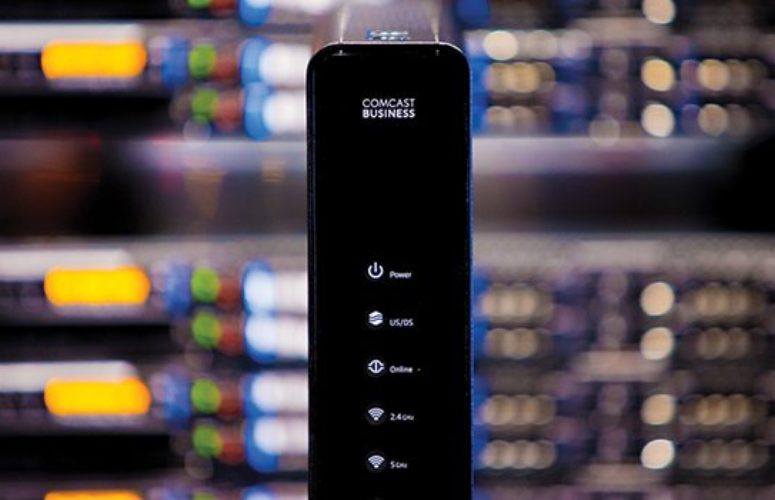
New Jersey Telecom Firms Changing the Digital Communications Landscape
Discover how leading-edge companies are connecting man to machine and machine to machine.
By Jennifer L. Nelson, Contributing Writer On Jul 4, 2016In New Jersey’s telecommunications industry, innovation is everything. That’s why the Garden State’s telecommunications companies are constantly investing in new technologies that help customers – ranging from small businesses to multi-billion-dollar corporations – stay connected.
According to Cisco, Wi-Fi devices will power a majority of all Internet traffic by 2017, and a 2015 study by Tech Pro Research found that 74 percent of businesses are using or are planning to use “bring your own device” (BYOD) policies. “These and other trends in consumer and employee behavior are causing demand for Wi-Fi to grow exponentially,” asserts Dave Dombroski, regional vice president of Comcast Business. “In our drive to give customers more of what they want – content, choices, control, freedom – innovation is a must.”
Comcast has spent decades investing in the necessary infrastructure to make its advanced network broadly available to businesses of all sizes, from small organizations with a handful of employees to large enterprises with offices across the country. “As a result, we’re able to offer a reliable, fully diverse and scalable solution that can accommodate virtually any business demand,” he says.
For businesses large and small, the company recently unveiled WiFi Pro, a comprehensive Wi-Fi solution that offers cloud-based controls, marketing tools and other advanced capabilities. WiFi Pro provides two high-performance commercial Wi-Fi networks – a private network for employees and a guest network for visitors and patrons – to provide additional security while leveraging the latest AC chipset to support the fastest Wi-Fi speeds and expanded range.
The company has also partnered with Amazon to provide businesses with direct links to Amazon Web Services (AWS), giving Comcast Business customers private network connectivity to the AWS Cloud services that perform critical processes like production compute and storage, backup, development/test, collaboration and billing or website hosting. With up to 10 Gbps of dedicated Ethernet connectivity to AWS using Comcast Business Ethernet, businesses with multiple locations – like offices, data centers or storefronts – can maximize performance when using AWS’s compute and storage services. “In New Jersey, we continue to proactively expand our vast fiber network and focus on helping organizations expand, diversify and prepare for the future by providing scalable bandwidth that can be adjusted as business needs change,” Dombroski says.
Some companies are devoting themselves entirely to helping businesses connect in today’s smartphone-obsessed business world. Phone.com, Inc. offers cloud-based phone services for small businesses, whether they’re a sole proprietor or have 30 employees, so that companies have countless options when connecting with their colleagues and customers – from conferencing and fax services to talk and text messaging. “Everything that you’d expect from old-fashioned business landline phones can now be done via your smartphone,” explains Ari Rabban, CEO of Phone.com, Inc. As more and more businesses become increasingly reliant on cloud-based services, companies like Phone.com are leading the way in ensuring that employers can choose how to remain connected with their employees and customers.
“Many of today’s business owners are more comfortable using their iPhone, Android, or tablet to place calls and conduct business, and we offer the ability to take a telephone and turn it into an app … so your cell phone becomes a complete business phone system where everything is done with a matter of a few clicks,” Rabban adds.
Of course, the state’s telecommunications companies have always had a responsibility to meet their customers’ demands to connect. According to Marcus Weldon, president of Nokia Bell Labs and Nokia chief technology officer, countless breakthrough innovations, inventions and discoveries were the result of the research done in New Jersey, including the transistor, cellular communications, solar cells, high-definition video and many others.
“These innovations have changed the world and underpin every modern-day digital service and solution … and therefore the evolution of every connected or web-enabled industry in New Jersey, the United States and throughout the world,” Weldon asserts.
As such, the company has been collaborating with state government leaders to support and draft last session’s S-2442 bill, which is among several “Fostering Innovation” bills that aim to create jobs in New Jersey.
Nokia is another company with a rich history of innovation. “We believe that the new Nokia Bell Labs, which is still headquartered in Murray Hill, will become an even greater innovation powerhouse in the future,” he says.
At Nokia Bell Labs, 1,000 researchers are given the challenge to find answers that are better by a factor of 10 times in terms of more capacity, faster messaging, better energy consumption, reliability, or overall performance in a key dimension of networks, devices or cloud systems and the associated software and application platforms. “These individual 10x research breakthroughs are combined into what we call Future X projects that seek to create innovations across all the major dimensions of the network,” he says.
The company is among the pioneers of fifth generation (5G) network technologies, as well as novel algorithms and new “small data” analytics and “deep learning” techniques to help humans think more effectively and quantum computing devices that will allow more efficient discovery of solutions to complex problems.
“The goal is to create time for people and businesses by the automation of every mundane task and assistance with complex tasks,” Weldon adds. “This may sound like science fiction, but right now Bell Labs is working on solving the key problems to make this automated world happen.”
Verizon is also leading the way in developing a 5G network for its consumer and business customers. The company is currently performing field tests in three of five of its New Jersey locations, and Raymond McConville, corporate spokesman for Verizon, predicts that 5G could become a viable service as early as 2017. “The telecommunications industry provides some of the most critical and crucial services in the world … the ones people depend on not only to do business, but to live,” he says. “That’s a responsibility we take very seriously, and we have a lot of pride in our ability to stay one step ahead of what our customers need.”
Of course, billion-dollar Internet companies like Google, Facebook and Amazon are revolutionizing the way businesses surf the web, engage in social networking, and perform online shopping and messaging. “There was once a time when we offered one service – landline telephones – but, today, it’s a completely different world and an extremely competitive marketplace,” McConville adds. “With companies like Amazon, Google and Facebook providing video services of their own, it’s more important than ever to stay on top of the latest and greatest in innovation. We recognize how rapidly our business and industry is changing, and we know that if you don’t adapt, you will die.”
Weldon notes that many businesses don’t realize just how much networking and information technology innovation is required to provide a broadband “on-ramp” for companies like Amazon – the metropolitan and core networks that connect to these web services and enable their growth.
“We’re about to enter a new Internet era, which is driven by the connection of not just web services and people, but everything … so innovation in the information and communications technology (ICT) industry is going to become even more important to enable this massive scaling and expansion of the network and the associated software systems and applications,” he says.
Indeed, many of the state’s telecommunications companies are looking ahead to determine how the digital world will continue to transform the ways in which people connect to people … or, more importantly, how people connect to machines. “In this digital era, the trillions of connected things – smart objects, cameras, robots, sensors, cars, vehicles, virtual reality headsets and processes – will continuously exchange high bandwidth video and data streams not only with people, but with cloud-based systems that extract knowledge from this data to allow the intelligent automation of tasks,” Weldon says. “This will make our work and home lives more convenient, and our environments more intelligent and safe.”
Companies like AT&T are also looking towards the future when innovating their products and services. With more than 3.5-million business customers around the world, including nearly all of the Fortune 1,000 companies, AT&T recently added DIRECTV and expanded into Mexico by acquiring Iusacell and Nextel. “We’re combining these assets with the network, innovation and technology that customers have come to expect from AT&T,” says J. Michael Schweder, president of AT&T Mid Atlantic.
As the largest pay-TV provider in the world, AT&T closed 2015 with 45 million connections and delivered broadband to more than 13 million subscribers. It also delivered wireless services to nearly 137 million subscribers. “Our technology adapts with speed and precision for all of our customers. Business has always been about tough choices – deciding between one path or another – and we help them do one thing and another at the same time,” Schweder says. “AT&T’s innovations help businesses in New Jersey and worldwide sense and adapt to an ever-changing landscape … and maintain their competitive edge.”
Since its launch in 2011, the AT&T Foundry has started more than 200 projects and deployed dozens of new products and services. “Our employees generate innovative ideas every day. More than 28,000 ideas have come from our employees via our The Innovation Pipeline (TIP) program in the five years since it started,” he adds. Some of these innovations lie in connecting businesses with communications and infrastructure. For example, the team at AT&T Labs, with locations in Bedminster and Middletown, is investigating how smart traffic design can help commuters spend less time on the road and working with automobile companies to deliver new entertainment and communications services via the company’s “Connected Car” initiative.
Through its Digital Life service, AT&T is using its network to help give customers more control over home automation and security, and moving quickly to trial on connected devices that will enhance customers’ lives from morning to night, such as the ability to use your smartphone as your wallet. “We do more than stay on top of the latest technologies and trends … we create them,” Schweder says. “Through innovation, we help our customers improve their lives with technology and give them the ability to do what they want, when they want it.”
Looking ahead, New Jersey’s telecommunications companies are feeling the pressure to move outside of their comfort zones and begin to innovate products and services that they wouldn’t typically offer. “While telecommunications companies traditionally had to connect people to people, now we have to learn how to connect people to machines … and machines to machines,” McConville concludes. “As more and more of the inanimate objects in our lives become connected and controlled by our networks, we realize that this really is the future for us.”
Related Articles:






